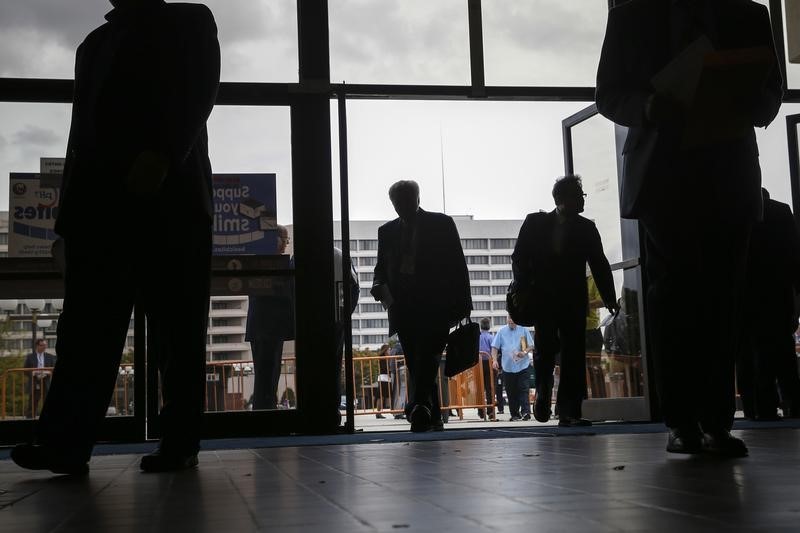UPDATE - Karahan: We Will Maintain a Tight Monetary Policy Stance Until a Lasting Decline in Inflation is Achieved
Forex - Central Bank Governor Karahan stated that the tight monetary policy stance will be maintained until a noticeable and lasting decline in the main trend of monthly inflation is achieved and inflation expectations converge towards the predicted range. Dr. Fatih Karahan, President of the Central Bank of the Republic of Turkey, gave a speech at the Istanbul Chamber of Commerce’s December Assembly Meeting.
In his speech, Karahan said: "Our disinflation process continues. Consumer inflation fell to 48.6% in October, marking a significant decrease compared to the peak in May. We expect inflation to drop to 44% by the end of the year. Although the main trend of inflation is improving more slowly than anticipated, it is showing signs of recovery, aided by low core goods inflation and an emerging improvement in service sector inflation.
After experiencing a rapid decline due to base effects in the summer months, inflation is expected to continue to decrease with upcoming improvements in monthly inflation. Our goal is to lower inflation to 21% by the end of 2025. Macroeconomic indicators are progressing in line with the disinflation process. Core goods inflation is persistently low, exerting pressure on the noted slowdown in the main trend.
Signs of improvement in service inflation are becoming more pronounced. We are observing a gradual improvement, particularly in areas outside of rent. On the other hand, looking at groups outside the core, we have seen increased energy price hikes in the third quarter. This development was significantly influenced by price changes in administered energy items as well as updates to fixed tax rates.
In the food sector, following improvements in the third quarter, we observed significant price increases in the unprocessed food group in October due to temporary supply conditions. This trend continues into November. Conversely, food inflation, excluding fresh fruits and vegetables, remains lower.
When examining service inflation more closely, the high trend in the third quarter was sustained, led by rents and education, which exhibit strong behavior in past indexing and are subject to price increase limitations. The back-to-school effect was prominent in service inflation during the third quarter. With the completion of the back-to-school period, relative price adjustments in these groups have largely been finalized.
We believe it is healthier to analyze service price dynamics in terms of rent and non-rent components. Rents are a structural issue that should be considered separately from other service items due to factors such as earthquakes, urban transformation, and rent increase limitations. For these reasons, we assess that the inertia in rent inflation is higher than our forecasts, while we observe a more pronounced slowdown in non-rent services.
Leading indicators obtained from the retail payment system for November suggest that monthly rent inflation will decelerate in the last quarter. Our determined stance in monetary policy will continue to reduce the main trend of monthly inflation through equilibrium in domestic demand, real appreciation in Turkish lira, and rectification in inflation expectations. Additionally, we assess that the increasing coordination of fiscal policy will also significantly contribute to this process.
In the second quarter of the year, the contribution of domestic demand to annual growth declined significantly, while net exports continued to have a positive contribution to growth. During this period, domestic demand contributed 1.2 points to growth, while the contribution of net exports was recorded at 1.3 points. Thus, the composition of demand in growth exhibited a more balanced appearance. We expect this outlook to continue in the third quarter data to be announced on Friday.
Current data for the third quarter indicate that the moderate trend in domestic demand persists. In this period, retail sales increased slightly compared to the previous quarter. However, when we look in more detail at retail sales, we see that the increase, excluding gold, has been more moderate.
The service production index also indicates a balance in domestic demand. In addition to these indicators, information obtained from company discussions also confirms the slowdown in domestic demand. Demand indicators for the fourth quarter imply that the conditions are supportive of a reduction in inflation.
Indicators calculated using different methods show that the output gap, which declined in the third quarter, is expected to continue decreasing into negative levels in the fourth quarter. At this point, I want to emphasize that our tight monetary policy will continue to support the balance in domestic demand. The negative levels that will occur in the upcoming period will be an essential component of the disinflation process.
In line with the balancing of domestic demand, we continue to see an improvement in the foreign trade balance. Recently, exports have maintained their strength, excluding gold and energy, while imports have remained moderate. We anticipate that similar trends will continue in the future.
The trajectory of inflation expectations is significant regarding the speed and cost of disinflation. With our tight monetary policy stance, we are determined to ensure that expectations develop in a way that contributes to the disinflation process. Market participants' expectations are relatively lower. In addition, the improvement in inflation expectations among households and the real sector in price-setting roles continues.
Alongside our determined stance in monetary policy, we expect the improvement in expectations to continue due to the decline in headline inflation. Producer inflation’s main trend remains moderate. As of October, when annualized, the manufacturing industry inflation's main trend is at 19.7%, which is significantly below the current 32% annual producer inflation.
As a result, the pressure from producer prices on consumer inflation is weakening. This situation positively reflects in the goods inflation in the CPI. We have observed a clear improvement in the pricing behavior of industrial firms. When examining domestic sales price expectations in the manufacturing sector, the proportion of firms planning to increase prices among those expecting increases in both domestic demand and unit costs is on a downward trend.
We have kept the policy rate, which we raised to 50% in March, stable for eight months. We will maintain our tight monetary policy until a noticeable and lasting decline in the main trend of monthly inflation is achieved and inflation expectations converge towards the predicted range. In this regard, we will determine the level of the policy rate to ensure the tightness required by the anticipated disinflation process, considering inflation outcomes and expectations.
We can summarize the macroprudential measures we use to support our tight monetary stance in three main groups: The first includes measures we have taken to increase the share of TL deposits and gradually reduce KKM. We made updates to these regulations in August, September, and November. As you can appreciate, in an economy with high dollarization, the effectiveness of monetary policy is low. Therefore, while tightening is one aspect, we have also taken macroprudential measures to increase the share of TL deposits to strengthen the transmission mechanism.
The second category includes monthly growth limits we imposed on TL and foreign currency loans. Through these limits, we have managed to curb fluctuations in credit demand. Finally, we have taken steps regarding liquidity management. We are sterilizing the temporarily excessive liquidity using required reserves and other tools.
The growth rates of Turkish lira commercial loans are moving in line with the monthly growth limits and credit demand. The improvement in inflation expectations is also playing a role in the moderate trend in loans. Regarding foreign currency loans, we lowered the monthly growth limit imposed in May in July. As a result of these limits, the growth in foreign currency loans adheres to target-compatible paths.
Looking at the Turkish lira commercial loan growth, we see that while loans to SMEs increased in October, larger firms, which can also utilize alternative financing options, are showing a weaker trend. We continue to see an increase in foreign currency commercial loans.
In recent years, we have enhanced the effectiveness of rediscount credits significantly with important changes in implementation, allowing more firms to utilize rediscount credits. By gradually increasing daily rediscount credit limits, we have made financing more accessible. The number of firms using rediscount credits, which was 2,100 at the end of 2018, approached 8,000 by November 2024. The share of SMEs among these firms increased from 38% to 83% during this period.
The KKM balance is decreasing, and the share of Turkish lira deposits is increasing. Due to our tightly maintained monetary policy stance and measures to reduce KKM balances, we are witnessing an increase in interest and confidence in Turkish lira assets. KKM accounts, which exceeded $140 billion in August 2023, fell to around $38 billion by mid-November. The transition rate from maturing KKM accounts to TL, which was around 10% at the beginning of the year, has recently reached about 25%. During this period, the share of KKM accounts in total has decreased from 26% to below 7%.
The share of Turkish lira deposits has increased from 32% to 58% during the same timespan. The decrease in KKM balances is enhancing the share of Turkish lira deposits, strengthening the monetary transmission mechanism, and reducing the risks associated with the central bank's balance sheet.
Recently, while risk appetite in global markets has experienced fluctuations, capital outflows from emerging markets have been observed, while portfolio flows towards Turkey have remained relatively favorable. Lately, both domestic and foreign residents’ confidence in the Turkish lira has increased, positively impacting reserves.
Between May 26, 2023, and November 22, 2024, gross reserves increased by $58.2 billion, while our net foreign exchange position, excluding swaps, improved by $102.3 billion. As of November 22, our gross reserve level exceeded $156 billion. Our net reserves, including TL-denominated foreign exchange swaps we conducted domestically, have risen to $41.8 billion.
Our tight monetary policy stance is helping strengthen our reserves and improve the risk perception towards Turkey. Since May of last year, Turkey’s risk premium and borrowing costs have significantly decreased. The declining risk premium and borrowing costs facilitate the real sector's ability to borrow from abroad under more favorable conditions. Our tight monetary policy stance limits the adverse effects of global market volatility on the country’s risk premium.
The disinflation process is continuing. In the upcoming period, the macroeconomic outlook will continue to support the disinflation process. In this context, demand conditions, expectations, and pricing behaviors, along with increasing confidence in the Turkish lira and a rising coordination of fiscal policy, will be decisive factors.
Throughout the disinflation process, we will continue to do whatever it takes to reduce inflation in alignment with the intermediary targets we have set. I want to reiterate that price stability is a prerequisite for sustainable growth and increased social welfare. We will resolutely maintain our tight monetary stance until price stability is achieved.


